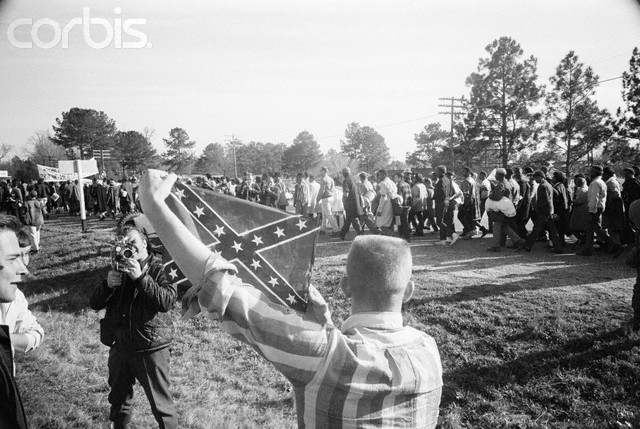rightwinger
Award Winning USMB Paid Messageboard Poster
- Aug 4, 2009
- 298,023
- 220,960
- 3,615
It is not a flag of southern heritage...but a flag of hate and subjugation
The surprisingly uncomplicated racist history of the Confederate flag
First sewn in 1861 — there were about 120 created for the war — the flag was flown by the cavalry of P.G.T. Beauregard, the Confederacy's first duly appointed general, after he took Manassas, Virginia, in the first Battle of Bull Run.
After the Civil War, the flag saw limited (and quite appropriate) use at first: It commemorated the sons of the South who died during the war.
But never did the flag represent some amorphous concept of Southern heritage, or Southern pride, or a legacy that somehow includes everything good anyone ever did south of the Mason-Dixon line, slavery excluded.
Fast-forward about 100 years, past thousands of lynchings in the South, past Jim Crow and Plessy v. Ferguson, past the state-sanctioned economic and political subjugation of black people, and beyond the New Deal that all too often gave privileges to the white working class to the specific exclusion of black people.
In 1948, Strom Thurmond's States' Rights Party adopted the Battle Flag of Northern Virginia as a symbol of defiance against the federal government. What precisely required such defiance? The president's powers to enforce civil rights laws in the South, as represented by the Democratic Party's somewhat progressive platform on civil rights.
Georgia adopted its version of the flag design in 1956 to protest the Supreme Court's ruling against segregated schools, in Brown v. Board of Education.
The flag first flew over the state capitol in South Carolina in 1962, a year after George Wallace raised it over the grounds of the legislature in Alabama, quite specifically to link more aggressive efforts to integrate the South with the trigger of secession 100 years before — namely, the storming of occupied Fort Sumter by federal troops. Fort Sumter, you might recall, is located at the mouth of Charleston Harbor.
Opposition to civil rights legislation, to integration, to miscegenation, to social equality for black people — these are the major plot points that make up the flag's recent history.
..
The surprisingly uncomplicated racist history of the Confederate flag
First sewn in 1861 — there were about 120 created for the war — the flag was flown by the cavalry of P.G.T. Beauregard, the Confederacy's first duly appointed general, after he took Manassas, Virginia, in the first Battle of Bull Run.
After the Civil War, the flag saw limited (and quite appropriate) use at first: It commemorated the sons of the South who died during the war.
But never did the flag represent some amorphous concept of Southern heritage, or Southern pride, or a legacy that somehow includes everything good anyone ever did south of the Mason-Dixon line, slavery excluded.
Fast-forward about 100 years, past thousands of lynchings in the South, past Jim Crow and Plessy v. Ferguson, past the state-sanctioned economic and political subjugation of black people, and beyond the New Deal that all too often gave privileges to the white working class to the specific exclusion of black people.
In 1948, Strom Thurmond's States' Rights Party adopted the Battle Flag of Northern Virginia as a symbol of defiance against the federal government. What precisely required such defiance? The president's powers to enforce civil rights laws in the South, as represented by the Democratic Party's somewhat progressive platform on civil rights.
Georgia adopted its version of the flag design in 1956 to protest the Supreme Court's ruling against segregated schools, in Brown v. Board of Education.
The flag first flew over the state capitol in South Carolina in 1962, a year after George Wallace raised it over the grounds of the legislature in Alabama, quite specifically to link more aggressive efforts to integrate the South with the trigger of secession 100 years before — namely, the storming of occupied Fort Sumter by federal troops. Fort Sumter, you might recall, is located at the mouth of Charleston Harbor.
Opposition to civil rights legislation, to integration, to miscegenation, to social equality for black people — these are the major plot points that make up the flag's recent history.
..
Last edited:



